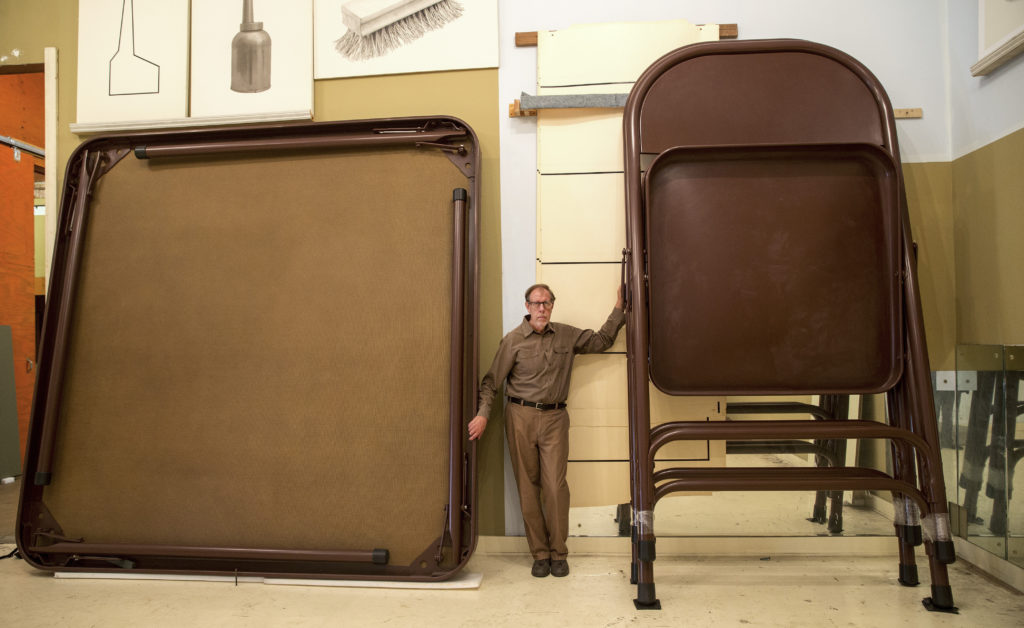People
Robert Therrien, the LA Artist Who Gained Fame for His Giant-Sized Sculptures of Chairs and Other Everyday Objects, Has Died at 71
The Los Angeles artist's monumental works inspired a sense of childhood wonder and whimsy.

The Los Angeles artist's monumental works inspired a sense of childhood wonder and whimsy.

Kate Brown

The American sculptor Robert Therrien, who is best known for his monumental folding tables, stacking chairs, and kitchenware, has died at age 71. Therrien was the artist who gave Marcel Duchamp’s idea of the readymade a cartoon-like twist by supersizing mass-produced objects.
The artist recently had a solo exhibition at Gagosian’s San Francisco gallery, which featured cartoonish sculptures and wall works on a more humble scale. “There is a diversity in the way people see,” Therrien in wrote in the introduction to the show. “Some always see flat. Others always in perspective.”
Gagosian, which represented Therrien alongside Sprüth Magers, confirmed the artist’s death. “Bob expressed his singular and enigmatic genius through an impeccable attention to detail, a transformative imagination with regard to scale, and an ability to translate the oft-overlooked into his own vision of beauty,” Gagosian said in a statement. The gallery noted that his studio was “a fabled fixture in downtown Los Angeles straddled the line between fantasy and reality, like much of his work.”
Therrien, who was born in Chicago in 1947, studied at the California College of Arts and Crafts (now the California College of the Arts) in Oakland and the Brooks Institute in Santa Barbara. He received a masters from the University of Southern California in LA.
At first, Therrien worked with everyday materials, such as doors, chairs, and plates. In the 1990s, the artist began transforming these domestic objects into his signature larger-than-life monuments, manipulating their materials, dimensions, and arrangements to draw them into a surreal world that piqued a childlike sense of play in viewers. People could walk or crawl under his gigantic chairs and dining tables, which are so large they sometimes grazed the gallery’s ceiling.
“While the scale of many of his installations was grandiose, his work across mediums was nevertheless marked by a deep and powerful sense of humanity,” wrote dealers Monika Sprüth and Philomene Magers in a statement.
Therrien’s work included notable installations such as RED ROOM (2000–7), a cupboard-sized space packed with hundreds of objects that the artist owned or collected in the color red. It forms part of the Artists Rooms collection, which is jointly owned by the Tate and National Galleries of Scotland. His work is also in the collections of New York’s Museum of Modern Art, the Whitney Museum of American Art, the Kunstmuseum Basel, and the Los Angeles County Museum of Art, among many other institutions.